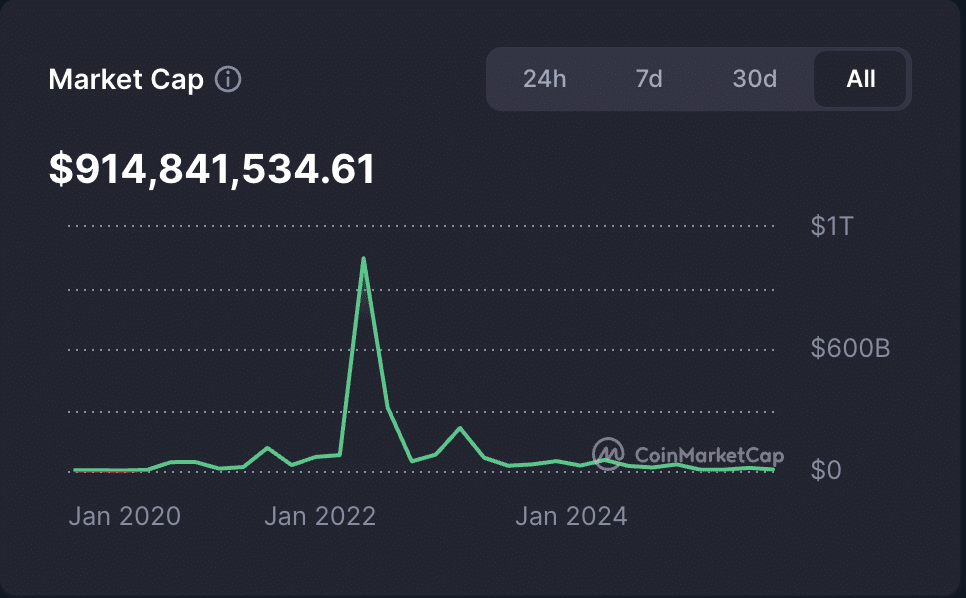OpenSea’s pivot to token trading transforms the platform from a pure NFT marketplace into a cross-asset, on-chain trading hub, anchored by the $SEA token launch in Q1 2026. The strategy emphasizes staking, governance, and a mobile app, expanding into tokens, perps, and real-world assets.
- OpenSea now sees token trading dominating volume: more than 90% of activity comes from tokens, not NFTs.
- $SEA token will power staking, governance, and a mobile app, with a 50% community allocation and the remaining portion of OpenSea revenue dedicated to token buybacks.
- Context: NFT market momentum is fading; OpenSea aims to become a multi-asset hub beyond NFTs, supported by data showing rising token trading share.
Description: OpenSea pivots to token trading with the $SEA token launch, reshaping NFT markets into a chain trading hub with staking, governance, and app access.
Published: October 17, 2025; Updated: October 18, 2025.
What is OpenSea’s pivot to token trading?
OpenSea is shifting from a pure NFT marketplace to a cross‑asset, on‑chain trading hub. The pivot is anchored by the forthcoming $SEA token launch in 2026 and focuses on enabling broader liquidity through staking, governance, and an upcoming mobile app. This move expands OpenSea’s scope beyond collectibles to tokens, perpetual contracts, and other asset classes, aiming to capture a larger slice of on‑chain finance.
How does the $SEA token work within OpenSea’s ecosystem?
OpenSea plans to launch the $SEA token in Q1 2026. At launch, 50% of the allocation will be dedicated to the community, with the remaining half of OpenSea’s revenue earmarked for token buybacks. The token will power staking and governance, and a mobile app is in closed alpha as part of broader cross‑chain liquidity ambitions. The evolution positions OpenSea to trade not just NFTs but a diversified set of crypto and tokenized assets.
The broader context is that the NFT market has faced a slow recovery after its 2021–2022 surge, with sector data showing muted activity compared with peak periods. NFT volumes on major chains have shown bursts but have not returned to previous highs, while token trading has grown as a proportion of platform activity. OpenSea’s leadership has framed the move as both a strategic evolution and a response to market dynamics, signaling a transition from a culture‑driven marketplace to a more holistic, finance‑oriented trading hub.

Source: CoinMarketCap
Meanwhile, volumes on prominent NFT ecosystems have shown brief upticks, but the broader market remains subdued. Leading projects that once defined the NFT boom have retraced significantly from their peaks. Even OpenSea’s main rival and other marketplaces have witnessed volume declines from mid‑year highs, underscoring a challenging backdrop for a culturally driven NFT market. The pivot to fungible tokens and cross‑asset trading is framed by executives as a survivability and strategic positioning move rather than a mere product expansion.
The shift is also framed as a broader industry trend toward tokenized ecosystems in Web3, with governance and staking models gaining traction across multiple platforms. The OpenSea move mirrors a longer‑term industry push toward integrating digital ownership with on‑chain financial primitives, where liquidity and cross‑asset participation could drive sustained engagement beyond NFTs.
$SEA token: A fresh start for a fading era
To fuel the next phase, OpenSea will launch its $SEA token in Q1 2026. At launch, 50% of the allocation will be dedicated to the community, with the remaining half of OpenSea’s revenue dedicated to buying back the token. The token will power staking, governance, and a mobile app now in closed alpha, signaling a tangible framework for community-driven development and platform growth.
The company describes the move as enabling a broader, on‑chain liquidity layer—allowing users to stake, participate in governance decisions, and access trading across tokens and other assets. This approach aligns with a broader industry shift toward tokenized ecosystems and decentralized finance utilities embedded within familiar consumer platforms.
From OpenSea’s perspective, the $SEA launch is designed to “shine a spotlight on everything we’re building,” highlighting the multi‑asset growth trajectory and the platform’s emphasis on expanding beyond traditional NFT ownership into a broader financial layer. The pivot is framed as a forward‑looking strategy to secure a lasting role in crypto’s evolving landscape rather than a retreat from the NFT space.
Is the NFT boom truly over?
OpenSea’s rebrand can be read as both an evolution and a retreat. It signals a deliberate shift toward on‑chain finance and cross‑asset liquidity, while acknowledging the NFT market’s historical cycle. If the largest NFT marketplace is betting on fungible tokens and broader financial primitives for growth, it may indicate a longer‑term trend away from a singular NFT boom toward an integrated, multi‑asset crypto trading environment. The industry will be watching closely how the $SEA token rollout unfolds and how the platform’s broader product roadmap performs in a consolidating market.
Key Takeaways
- Why is OpenSea pivoting away from NFTs?: The platform is evolving into a multi‑asset, on‑chain trading hub as token trading dominates platform activity and market dynamics shift away from pure NFT ownership.
- What’s the $SEA token launch about?: Aimed for Q1 2026, with 50% of the allocation to the community and the remainder of OpenSea’s revenue allocated to buybacks; the token will empower staking, governance, and ecosystem expansion, including a closed‑alpha mobile app.
- Strategic context and data: OpenSea’s pivot is underscored by data showing rising token trading share and a backdrop of fading NFT market momentum, suggesting a broader move toward cross‑asset liquidity and on‑chain finance within crypto ecosystems.
Conclusion
OpenSea’s pivot from a single‑purpose NFT marketplace to a cross‑asset, on‑chain trading hub represents a deliberate strategic shift rooted in market dynamics and long‑term crypto ecosystem trends. The $SEA token launch and the emphasis on staking, governance, and cross‑asset liquidity will shape OpenSea’s trajectory in the coming years as it seeks to balance cultural leadership with financial utility. COINOTAG will continue to track development and provide updates on how this transition impacts users, liquidity, and platform sustainability.
Author: COINOTAG
